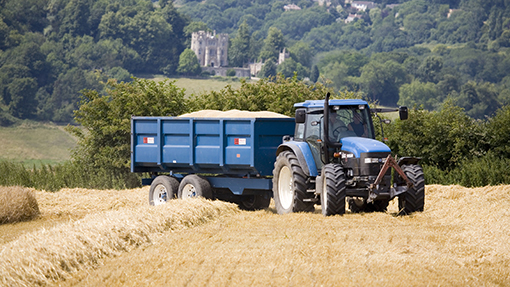Arable businesses need clever strategy for 2014

Smart thinking will be needed to get many arable businesses through 2014, warns consultant Andersons.
Costs of production, cashflow management and grain marketing all need closer attention on many farms, said Richard King, partner and head of business research.
Many would also benefit from half a day spent away from the business to take a five- to 10-year strategic view, he said.
With wheat at £150/t, the firm’s 600ha Loam Farm arable farm model is budgeted to produce a business surplus of £248/ha from the 2014 harvest after SFP and ELS payments. This compares with £278/ha in 2013 and £351/ha in 2012.
Machinery investment
- Machinery depreciation up 40% in five years to £143/ha
- Target of 1hp/ha for combinable crops
- Consider realistic business needs before tax or bank balance
- Huge scope for joint ventures and sharing
However, only top performers look like making a profit from feed wheat in 2014 – the widening gap between the worst and best performers is starkly illustrated by looking at their costs of production.
At a yield of 7.7t/ha, the bottom 20% of growers can’t produce wheat for less than £170/t while the top 20% can grow it for about £111/t. These figures include machinery depreciation and any manual labour by the farmer.
Lower output in 2013 has also led to cashflow pressure for many in the face of potentially large UK and global cereal crops this year.
“The practical problems of the last two seasons have perhaps seen the focus drift away from grain marketing but now businesses should take a more proactive approach,” said Mr King.
There was always a danger of marketing following the past season’s price trend, so even a simple plan of selling a third at different times of the year was better than no plan, he suggested.
Having low costs of production was the best way to deal with uncertain markets but over the past few seasons many combinable cropping businesses had drifted into high-cost production models, often the result of over-equipping and paying very high rents for additional land.
Looking ahead
- CAP reform “greening” requirements start on 1 January 2015, so crops planted this autumn must be “greening-compliant”
- Introduction of the Basic Payment Scheme will see most farms’ support payments fall by 10-20%
- Those in Scotland and Wales with high historic payments will see much greater drops; England’s ELS scheme is also to be discontinued, prompting a further income fall of £30/ha
- Claim form in 2015 will be more complicated
Farmers needed to beware of the “economies of scale” illusion, said Mr King. “There’s the mindset that ‘if I go from 800 acres to 1,000 acres, my costs will go down’ but it doesn’t always work like that.
“Capital investment in agriculture, particularly in machinery and equipment, is often not as well thought through as it needs to be,” he warned, with buying decisions often driven by the desire to avoid tax or the health of the bank balance rather than by fundamental business needs.
This often resulted in increased costs of production, with long-lasting effects. Roots and field vegetables continued to be high-risk, with not all businesses seeing returns warranted by their exposure.
